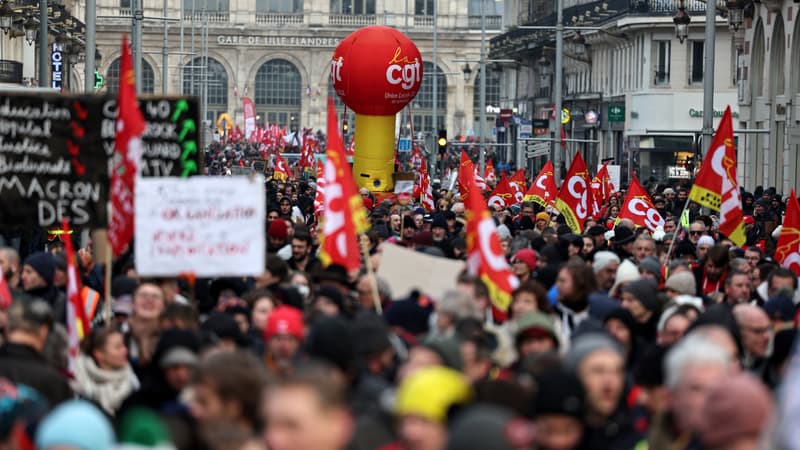More people on the street but a stable or even lower rate of strikers compared to 2019. That is what seems to be shaping up for this January 19, the first day of mobilization against the pension reform.
In transport and in particular at SNCF, the strike had been more followed on December 5, 2019, the first day of the movement against the previous reform. While for this Thursday the rate of strikers reached 46.3% in the railway company as a whole, including 77.4% of drivers and 50.8% of controllers, three years ago the rate was 9 points higher with 55.6% of strikers on average, including 85.7%. among drivers and 73.3% among drivers.
A less frequent strike in National Education
As for traffic conditions, a return to normality is expected this Friday, despite “some local disturbances in certain regions.” On the other hand, traffic will be almost normal on the main lines.
Dans l’Education nationale, les chiffres communiqués montrent là encore a taux de grévistes plutôt en retrait par rapport à 2019. % three years ago.
The ministry shows a clearer reflux with a rate of 42.4% in primary (51.2% in 2019) and 34.7% in secondary (42.3% in 2019) for a global rate of 38, 5%.
In the public service, there is no explosion in the rate of strikers either. 28% of civil servants were on strike on Thursday at noon, according to figures reported by the Ministry of Public Administration (compared to 33% in 2019). On the other hand, the rates are slightly higher in the territorial public service with 11.3% (10% in 2019) and the hospital public service with almost 10% of strikers compared to 8.7% in 2019.
A strike movement that seems to have been very followed in certain companies and in particular those of the energy sector, already weakened in recent months.
The energy sector mobilized
Thus, at noon, the EDF management announced that the participation of the company’s employees in the strike amounted to 44.5% of the total workforce. A much higher rate than three years ago since 36.5% of the electrician workforce had left by noon on December 5, 2019.
Also in Engie, the mobilization seems to have been a little stronger than three years ago. About 40% of the group’s workforce with status electricians and gas workers were on strike, the French energy company said Thursday afternoon. They were 39% in 2019 according to the figures communicated at the time by the group.
As for the refineries, the CGT TotalEnergies had between 70 and 100% strikers, in most of the group’s sites. According to a first point of the CGT, there were 100% strikers in the morning shifts for the La Mède biorefinery, the Flandres fuel depot, near Dunkerque, and the Carling (Moselle) petrochemical plant.
A situation comparable to that of 2019 that had seen seven of the eight refineries in France go on strike and 12 depots out of 200.
Source: BFM TV


